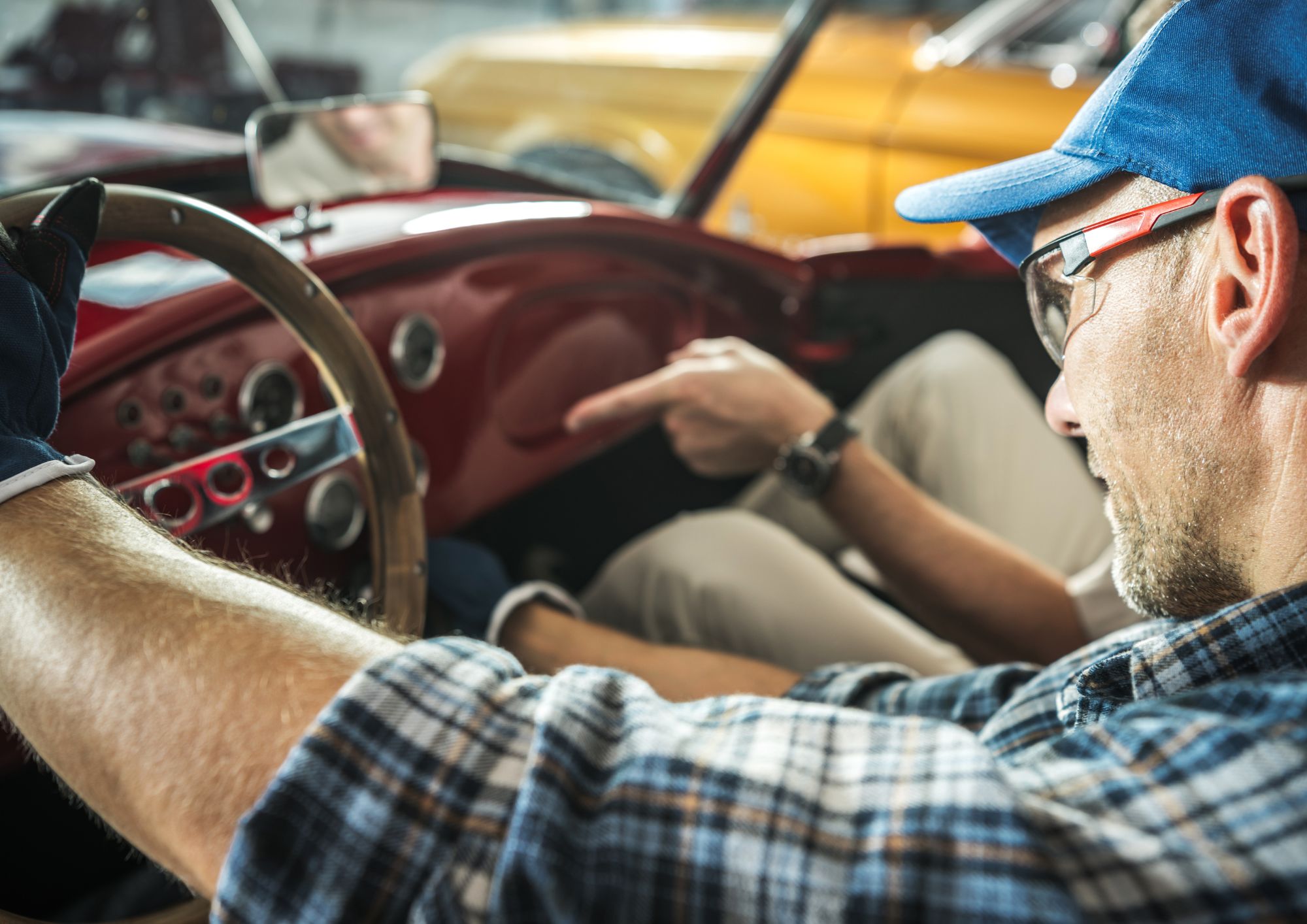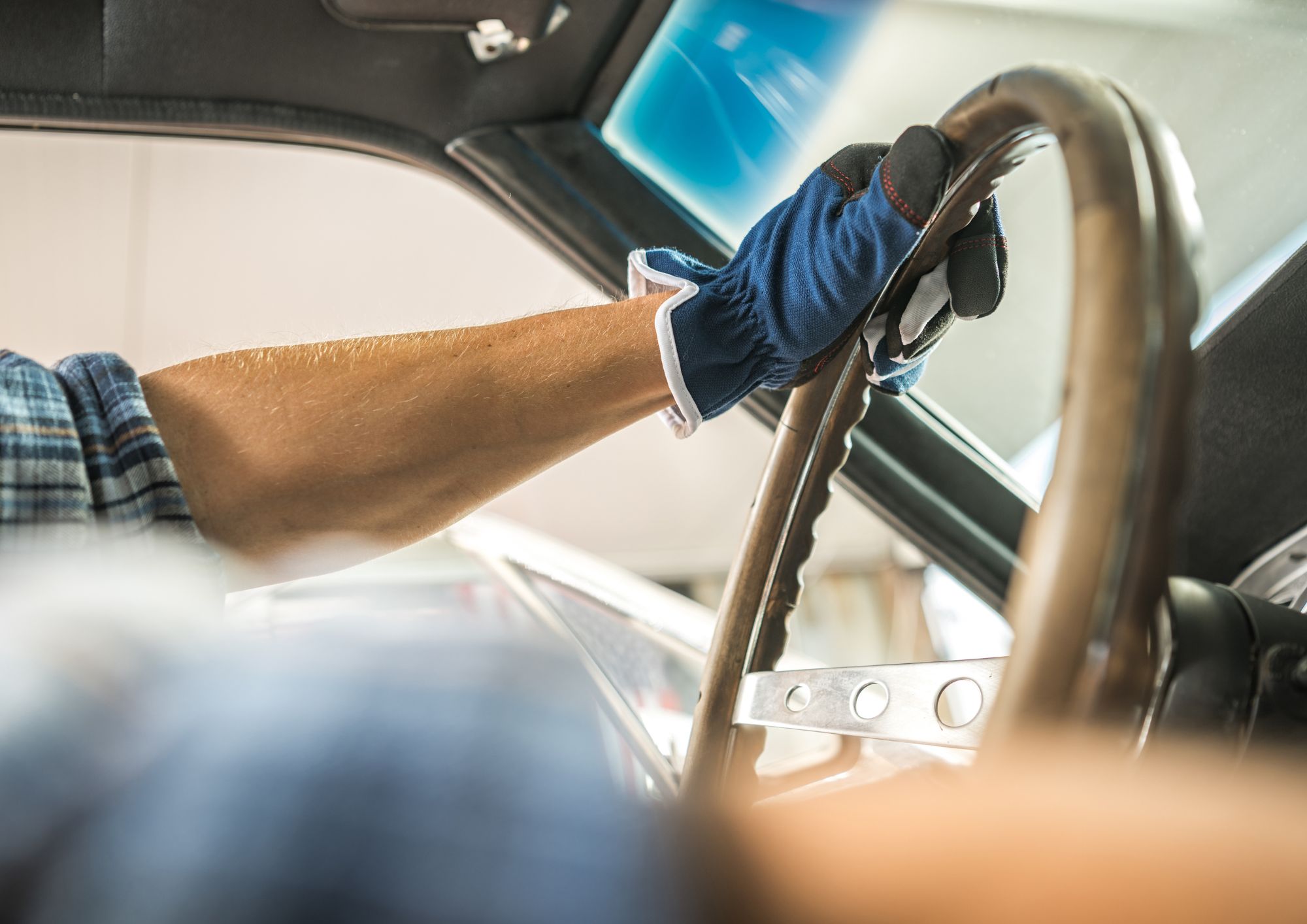Techniques, materials, and tips to preserve the essence of your vehicle without losing authenticity
Classic cars have something that sets them apart: their character, their history, and that interior design that transports us to another era. But the passage of time also leaves its mark on them. One of the most affected elements is the dashboard, a central piece of the cabin that not only serves an aesthetic purpose, but also a structural and functional one. That's why the Dashboard restoration on classic cars in Vilanova del Camí It must be approached with a different focus than that of modern vehicles: more artisanal, more careful and more respectful of the original materials.
In this article, we explain how this type of restoration is carried out, what aspects to consider, and why trusting professionals is key to maintaining the value and authenticity of your classic vehicle.

Why restore the dashboard of a classic car?
The dashboard in older cars is often made of very different materials than today's: more rigid plastics, coated metal structures, textured vinyl, or even wood. Over the years, these materials tend to:
-
Cracking due to sun exposure and temperature changes
-
Cracking due to natural aging of the plastic or rubber
-
Lifting or peeling off due to deterioration of the original adhesive
-
Losing color or shine due to oxidation of pigments
-
Become deformed, especially if they have been exposed to constant moisture or heat
Restoration doesn't simply mean repairing a crack. It means returning the dashboard to its original state, or as close to it as possible, while respecting the factory aesthetics. And if done well, it not only improves the car's appearance, but also maintains—or even increases—its market value.
Basic principles in the restoration of classic dashboards
When it comes to classic cars, there are three pillars that should guide any work on the dashboard:
1. Faithfulness to the original design: The goal isn't to modernize, but to preserve. Therefore, the first step is to research: What was the model's dashboard originally like? What texture did it have? What exact color? This includes respecting the type of paint, the finish (matte, satin, or gloss), the seams, the buttons, trim, and distinctive shapes.
2. Use of compatible materials: Many materials used in older cars are no longer manufactured or have been replaced by modern equivalents. The challenge lies in finding products that faithfully mimic the original, such as vinyls with the same texture, specific resins, or paints with custom shades.
3. Craft technique: The restoration of a dashboard Classic can't be done on a production line or through industrial processes. It requires time, expert craftsmanship, and attention to detail: hand sanding, heat molding, specific fillers for small cracks, layered repainting, etc.

What is the restoration process like?
The process may vary depending on the damage and vehicle model, but generally includes the following steps:
1. Complete disassembly of the dashboard
It's essential to remove the dashboard from the car to work accurately, avoid damaging other components, and access the internal structure. The vents, buttons, trim, and areas that connect to the windshield must also be removed.
2. Deep cleaning and diagnosis
Adhesive residue, dust, grease, and oxidized varnish are removed, and hidden areas are inspected to identify deformations, internal cracks, or corroded parts.
3. Crack repair and structural reinforcement
Cracks are filled with flexible resins, weakened areas are reinforced, and the original shape is restored if necessary. In some cases, missing parts are reconstructed using molding or 3D printing.
4. Application of new materials
Vinyl, paint, rubber, or fabric is applied according to the car's original finish. This step requires precision and a uniform finish, free of bubbles and wrinkles. If the dashboard had a texture, it must be reproduced with specific tools.
5. Assembly and final adjustments
Once restored, the dashboard is replaced in the vehicle. The electronic components are reconnected, the seals are tightened, and all controls and gauges are checked for proper operation.
What are the differences with a modern dashboard?
In today's cars, the dashboard is usually made of more standardized and modular materials, making it easier to replace parts or panels. However, in classic cars, each dashboard was almost a custom-made project, with its own design lines, more fragile materials, and less standardized assembly.
Therefore, while in a modern car the repair may focus on efficiency, in classic cars the approach must be artisanal. Dashboard restoration on classic cars in Vilanova del Camí seeks to preserve, not reinvent.
How much can it cost and how long does it take?
The price depends on the degree of deterioration, the car model, and the desired finish. Generally speaking:
-
Minor repairs (cracks, touch-ups): from €200
-
Medium restoration (partial veneer): €400–700
-
Full restoration with disassembly and customization: €800–1,500 or more for high-end or collector cars
The estimated time can range from 2 to 7 business days, depending on the complexity.

Restoring a classic car's dashboard is much more than just a cosmetic upgrade. It's a way to preserve the vehicle's history, respect its original design, and ensure it continues to convey the same sensations as the first day.
A good job of Dashboard restoration on classic cars in Vilanova del Camí It combines technical knowledge, respect for the part, and attention to detail. And when done right, the rewards are twofold: on the one hand, a renovated interior that honors the car's essence, and on the other, added value that is reflected both in daily use and in the resale market.